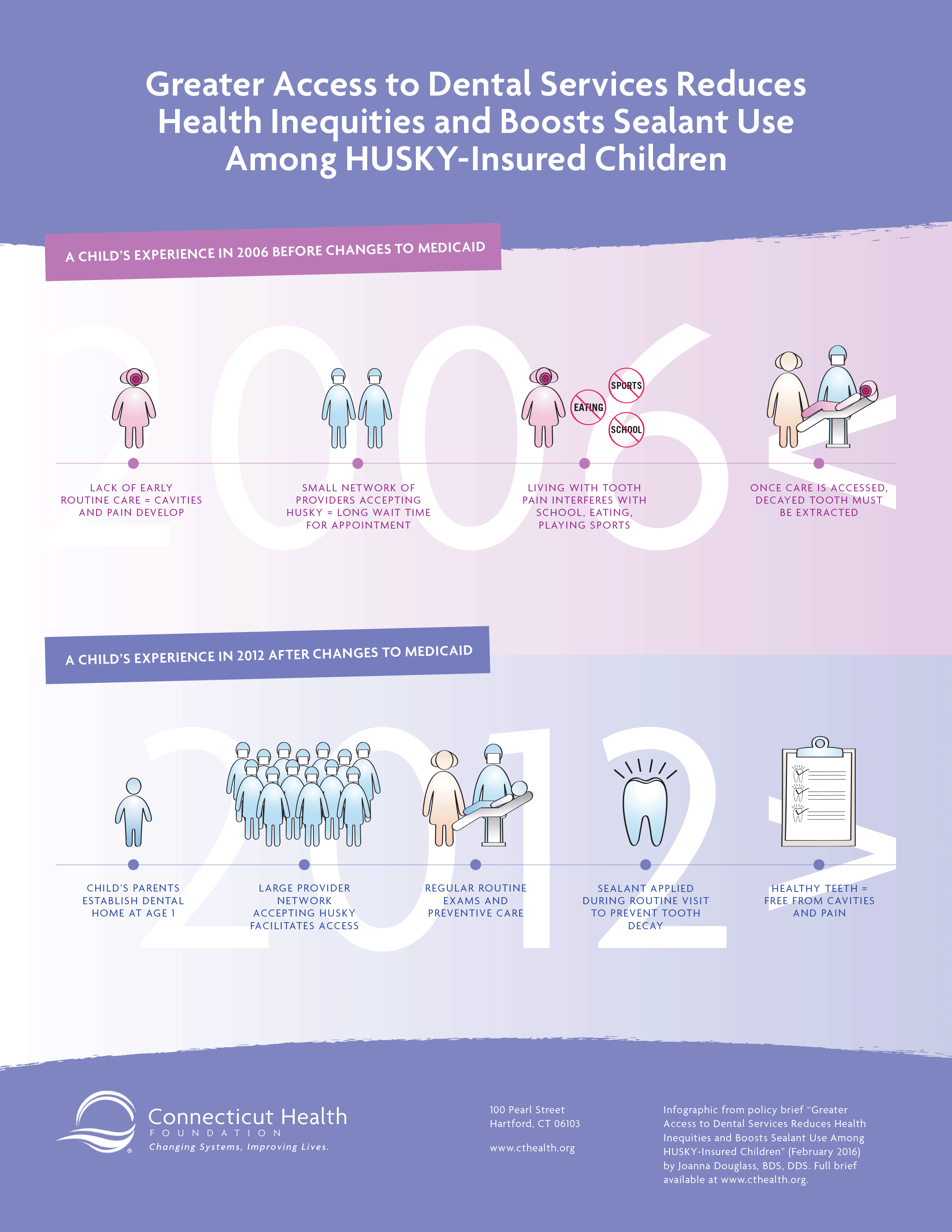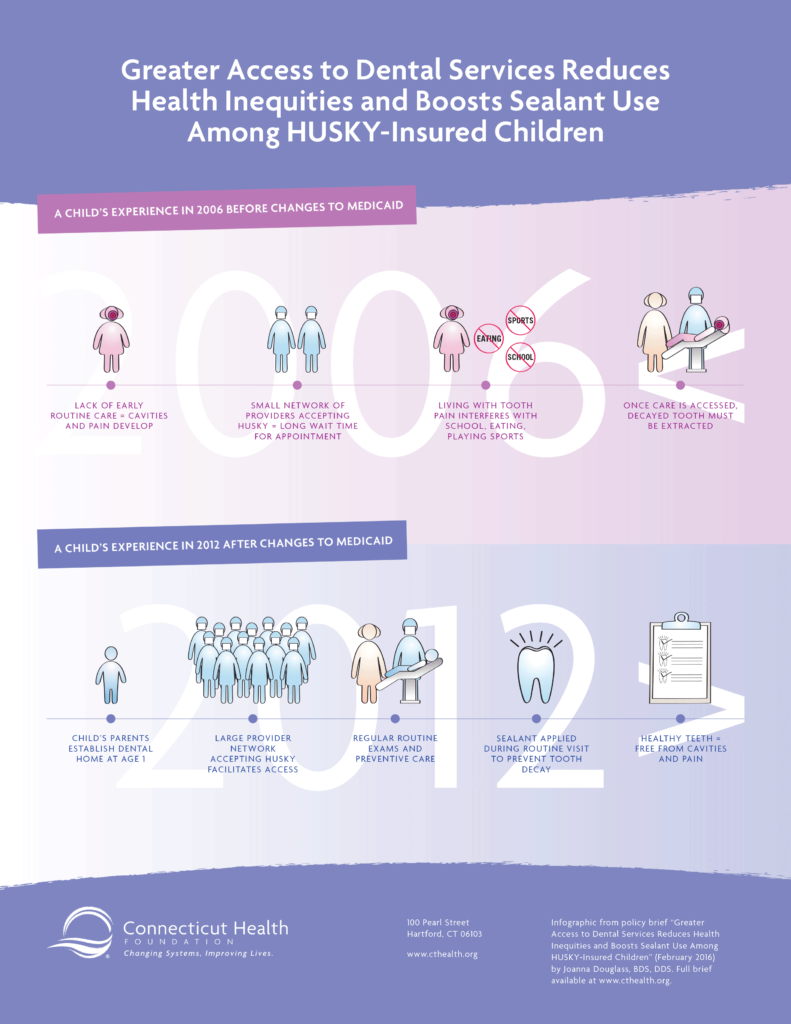CAN PUBLIC POLICY CHANGES IMPROVE CHILDREN’S ORAL HEALTH?
Changes to Connecticut’s Medicaid program (HUSKY) in 2008 provided a unique opportunity to examine the impact of new policies on the oral health outcomes of low-income children. Higher Medicaid reimbursement rates, streamlined provider enrollment procedures for participating dentists, as well as outreach to communities, individuals and dentists helped expand access to dental services and remedy Connecticut’s most common and treatable chronic childhood disease—tooth decay.
Dental sealants—protective plastic coatings dentists apply to the biting surface of first permanent molars— are an indicator that the HUSKY program’s children’s dental policies have worked to increase access, reduce disparities and, most importantly, improve the oral health of children.
Key Findings
- Dental sealants were provided more frequently to HUSKY-insured children who accessed dental services in 2012 than in 2006
- Black and Hispanic children living in urban areas experienced the highest sealant application rates
- Sealant use improved overall oral health by decreasing the need for future dental treatments
- Elevated provider reimbursement rates, streamlined provider enrollment procedures and outreach increased private dentist participation and improved HUSKY-insured children’s access to routine dental care
Authors
Joanna Douglass, BDS, DDS, University of Connecticut School of Dental Medicine

